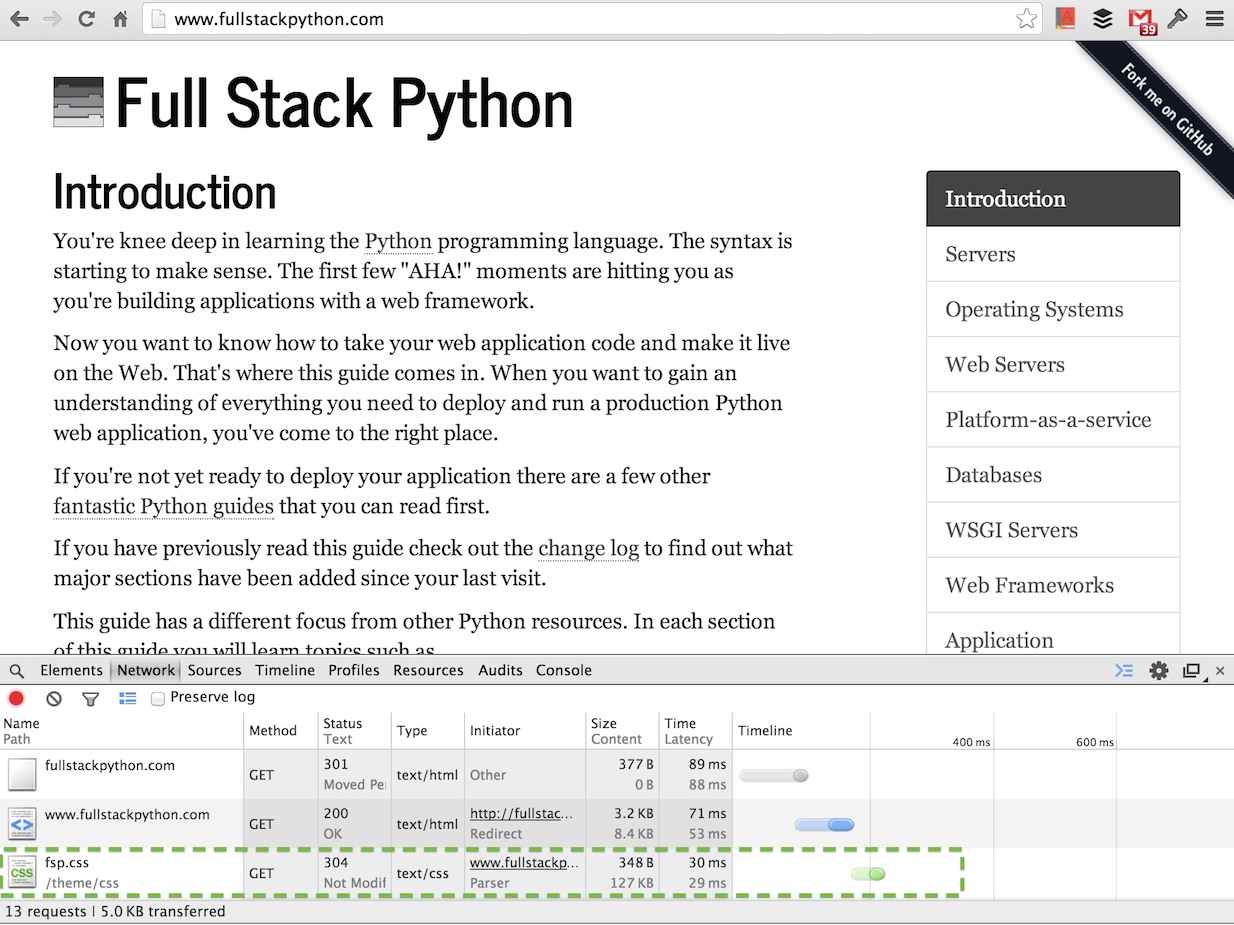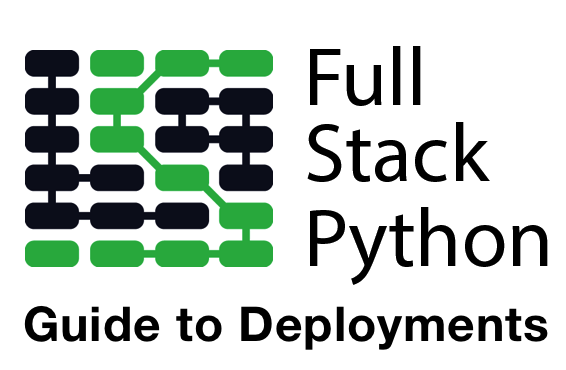Cascading Style Sheets (CSS)
Cascading Style Sheet (CSS) files contain rules for how to display and lay out the HTML content when it is rendered by a web browser.
Why is CSS necessary?
CSS separates the content contained in HTML files from how the content should be displayed. It is important to separate the content from the rules for how it should be rendered primarily because it is easier to reuse those rules across many pages. CSS files are also much easier to maintain on large projects than styles embedded within the HTML files.
How is CSS retrieved from a web server?
The HTML file sent by the web server contains a reference to the CSS file(s) needed to render the content. The web browser requests the CSS file after the HTML file as shown below in a screenshot captured of the Chrome Web Developer Tools network traffic.

That request for the fsp.css file is made because the HTML file for Full
Stack Python contains a reference to theme/css/fsp.css which is shown
in the view source screenshot below.

CSS preprocessors
A CSS preprocessor compiles a processed language into plain CSS code. CSS preprocessing languages add syntax such as variables, mixins and functions to reduce code duplication. The additional syntax also makes it possible for designers to use these basic programming constructs to write maintainable front end code.
-
Sass is currently the favored preprocessor in the design community. Sass is considered the most powerful CSS preprocessor in terms of advanced language features.
-
LESS is right up there with Sass and has an ace up its sleeve in that the Bootstrap Framework is written in LESS which brings up its popularity.
-
Stylus is often cited as the third most popular CSS preprocessing language.
CSS preprocessor resources
-
The Advanced Guide to HTML and CSS book has a well-written chapter on preprocessors.
-
Sass vs LESS provides a short answer on which framework to use then a longer more detailed response for those interested in understanding the details.
-
How to choose the right CSS preprocessor has a comparison of Sass, LESS and Stylus.
-
Musings on CSS preprocessors contains helpful advice ranging from how to work with preprocessors in a team environment to what apps you can use to aid your workflow.
CSS frameworks
CSS frameworks provide structure and a boilerplate base for building a web application's design.
CSS resources
-
Frontend Development Bookmarks is one of the largest collections of valuable resources for frontend learning both in CSS as well as JavaScript.
-
CSS refresher notes is incredibly helpful if you've learned CSS in bits and pieces along the way and you now want to fill in the gaps in your knowledge.
-
Mozilla Developer Network's CSS page contains an extensive set of resources, tutorials and demos for learning CSS.
-
CSS Positioning 101 is a detailed guide for learning how to do element positioning correctly with CSS.
-
Learn CSS layout is a simple guide that breaks CSS layout topics into chapters so you can learn each part one at a time.
-
Google's Web Fundamentals class shows how to create responsive designs and performant websites.
-
Tailoring CSS for performance is an interesting read since many developers do not consider the implications of CSS complexity in browser rendering time.
-
Can I Use... is a compatibility table that shows which versions of browsers implement specific CSS features.
CSS learning checklist
-
Create a simple HTML file with basic elements in it. Use the
python -m SimpleHTTPServercommand to serve it up. Create a<style></style>element within the<head>section in the HTML markup. Play with CSS within that style element to change the look and feel of the page. -
Check out front end frameworks such as Bootstrap and Foundation and integrate one of those into the HTML page.
-
Work through the framework's grid system, styling options and customization so you get comfortable with how to use the framework.
-
Apply the framework to your web application and tweak the design until you have something that looks much better than generic HTML.
Once your app is styled what do you need to learn next?

Searching for a complete, step-by-step deployment walkthrough? Learn more about The Full Stack Python Guide to Deployments book.
Email Updates
Cascading Style Sheets
Need more detailed tutorials than you see here? Learn more about The Full Stack Python Guide to Deployments book.

